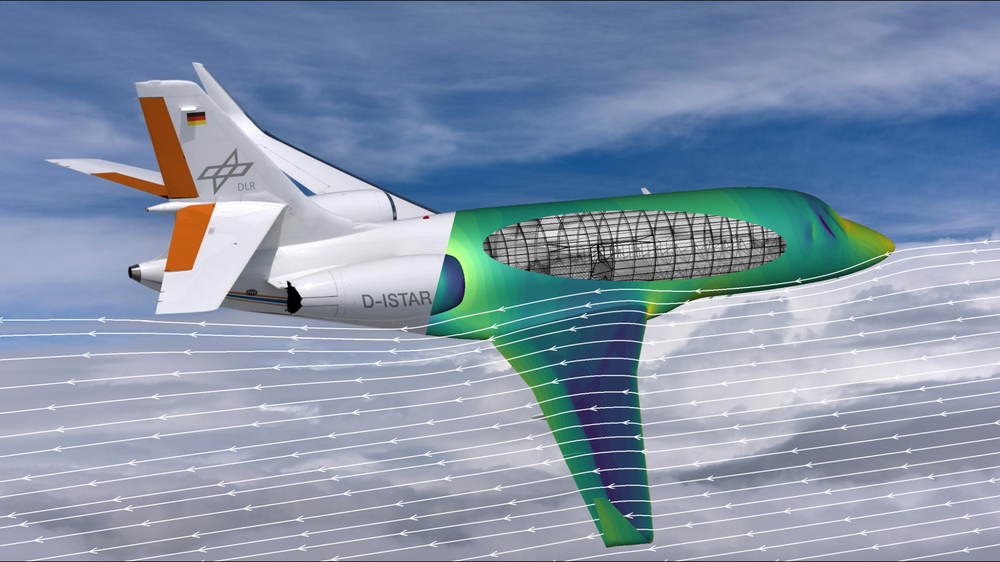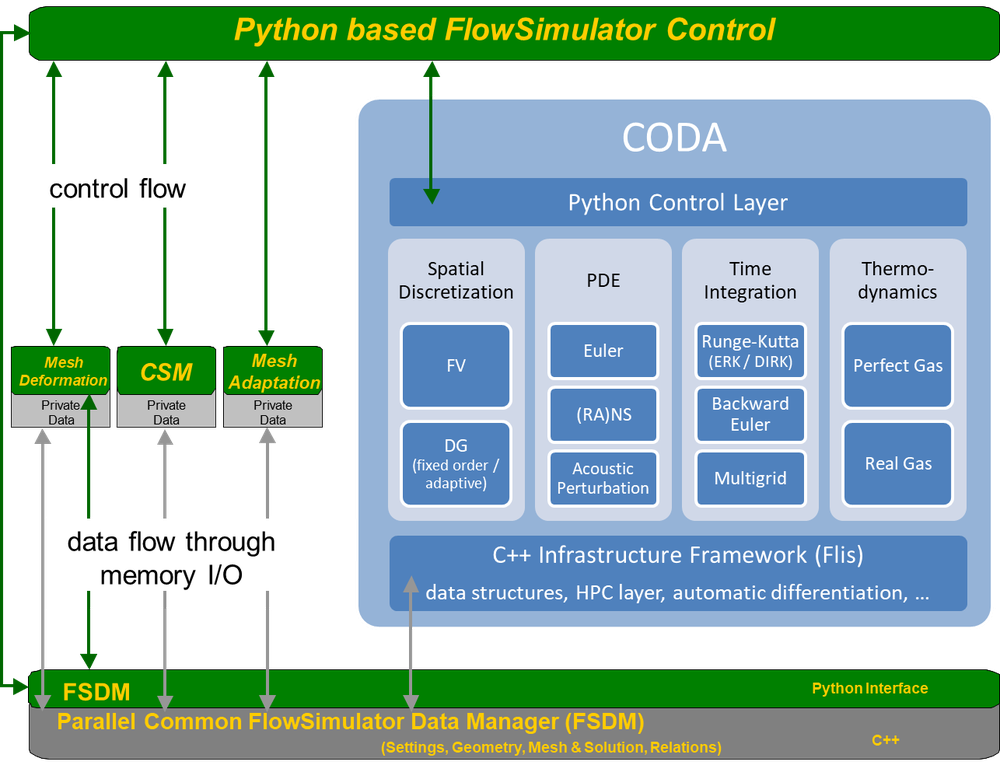CFD Software by ONERA, DLR and Airbus (CODA)

CODA is the computational fluid dynamics (CFD) software being developed as part of a collaboration between the French Aerospace Lab ONERA, the German Aerospace Center (DLR), Airbus, and their European research partners. It works on unstructured meshes and supports generic element types, higher-order mesh representations, mesh adaptation with hanging nodes and a new technique for dealing with (potentially) overlapping mesh parts. It therefore offers a very high degree of flexibility. Established and advanced higher-order spatial and temporal discretisation methods enable the highly accurate calculation of the flow fields. Strong implicit solution methods, in combination with the dedicated library for linear solvers Spliss (Sparse Linear System Solver) developed by DLR, enable the efficient computation of discrete solutions. Thanks to a hybrid parallelisation, CODA can be used on state-of-the-art high-performance computing clusters with excellent parallel scalability, which can drastically reduce the turnaround time of individual simulations. Complete and consistent linearisations enable the use of gradient-based, adjoint-supported optimisation methods for use in design tasks. In addition to the focus on compressible flow equations, extensions for the incompressible flow regime and for flows with strong compression shocks at high Mach numbers are being developed. CODA is integrated as a plug-in within the modular multidisciplinary FlowSimulator simulation platform for applications beyond the purely aerodynamic context.
CODA is jointly owned by ONERA, DLR and Airbus.
Key features

- unstructured computational meshes (tetrahedra, prisms, pyramids, hexahedra, polyhedra)
- overlapping and/or abutting mesh parts as well as hanging nodes (in particular for adaptive mesh refinement)
- cell-centered Finite Volume method and high order spatial discretisation schemes (Discontinuous Galerkin method with and without collocation)
- explicit and implicit time stepping schemes as well as frequency domain methods
- strong implicit iterative solvers
- consistent adjoints via Automatic Differentiation
- seamless integration into the multi-disciplinary simulation framework FlowSimulator
- compressible and incompressible mode, separate extension for high Mach numbers
- hybrid parallelisation using both multi-threading and MPI
- extensive quality assurance measures
Aeras of application

CODA’s main area of application is the calculation of aerodynamic effects, i.e. the determination of forces and moments exerted on aircraft by the flow around them, as well as their spatial distribution over the vehicle’s surfaces. Here, the focus is on the highly accurate determination of these quantities. In combination with other elements available in the multi-disciplinary simulation platform, the interactions between fluid flow and structure as well as flight mechanics and dynamics effects can also be assessed. In addition to the analysis of existing configurations, the process can also be applied to design new concepts.
In addition to its focus on aviation applications CODA is used to calculate aerodynamic effects in other areas as well. Within DLR's range of topics, these are in particular applications in wind energy and space transportation.
Links
License notice
Access to this software can only be granted under certain conditions on the basis of a license agreement. Please contact us if you are interested in a license. Please note that we do not conclude license agreements with private individuals or with organisations outside the EEA.
